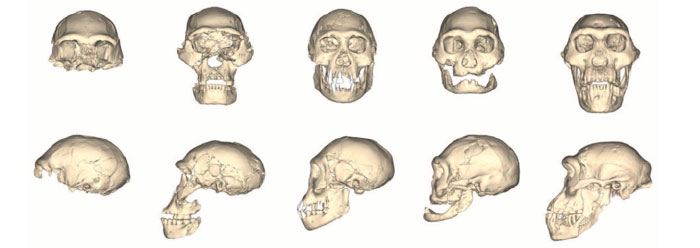According to detailed biblical chronologies and genealogies, the global Flood recorded in Genesis that wiped out humanity occurred about 4,500 years ago.1,2 Then the earth was repopulated by Noah’s three sons and their three wives. As I reported a couple months ago, a research project was just published that used high quality DNA sequence data to develop a human Y-chromosome genetic clock that matches up perfectly with the Bible’s timeline of modern human origins.3,4
Now, the same researcher has shown that human population growth curves over the past few thousand years match up with both the new Y-chromosome data and biblical event chronology.5
The majority of evolutionary speculation alleges that modern humans didn’t arise until our ancestors migrated out of Africa between 100,000 and 200,000 years ago. However, a number of secular and creationist research studies analyzing a variety of DNA clocks have indicated a far shorter time-scale of not more than 5,000 to 10,000 years.6-9 And a new more precise human Y-chromosome DNA study demonstrates that not only are the previous studies vindicated in their short time predictions, the Bible’s timeline of the global Flood appears to be spot on. In fact, the researcher in the study empirically showed that only about 4,500 years of mutations have accumulated in the DNA record of the human Y chromosome. If mankind has been around for 100,000 to 200,000 years, we should’ve accumulated between 8-59 times the number of mutations actually observed.4
But what about human population growth? Does it match up with these Bible-based timelines and the new genetic data? As it turns out, secular scientists and creationists generally agree on the basic events and population growth models for the past 3,000 years. But when dates get beyond this, there are discrepancies in their models.
Creationist researcher, Nathaniel Jeanson, determined to see how population growth would match up with splits in lineages in Y-chromosome genetic clock data.5 This was possible because this type of genetic data can be analyzed in a tree-like structure. Along this line of reasoning, a biblical timescale predicts that the last 4,500 years of human population growth should be reflected in the branching events of human lineages in the Y chromosome tree data—not just in the lineages represented in the “tips” of the tree. And quite interestingly, the population growth and Y-chromosome data also appear to fit well with specific shifts in population structure in ancient history such as the global famine described during the Bible patriarch Joseph’s life as a ruler in Egypt, as described in the in the later chapters of Genesis. A global famine would dramatically stunt population growth and be detected in genetic branch analyses.
In regards to the importance of these new results, Jeanson told ICR staff,
In summarizing the key challenge this new research presents to the secular science community, Jeanson stated,
Indeed, this new study isn’t only a sound refutation of evolutionary speculation, but a strong confirmation for mankind’s recent origins.
References
1. Johnson, J. J. 2008. How Young Is the Earth? Applying Simple Math to Data in Genesis. Acts & Facts. 37 (10): 4-5.
2. Hardy, C. and R. Carter. 2014. The biblical minimum and maximum age of the earth. Journal of Creation. 28 (2): 89-96.
3. Tomkins, J. P. 2019. Y-Chromosome Study Confirms Genesis Flood Timeline. Creation Science Update. Posted on icr.org December 17, 2019, accessed January 24, 2020.
4. Jeanson, N. T. and A. D. Holland. 2019. Evidence for a Human Y Chromosome Molecular Clock: Pedigree-Based Mutation Rates Suggest a 4,500-Year History for Human Paternal Inheritance. Answers Research Journal. 12: 393-404.
5. Jeanson, N. T. 2019. Testing the Predictions of the Young-Earth Y Chromosome Molecular Clock: Population Growth Curves Confirm the Recent Origin of Human Y Chromosome Differences. Answers Research Journal. 12: 405–423.
6. Tomkins, J. P. 2015. Genetic Clocks Verify Recent Creation. Acts & Facts. 44 (12): 9-11.
7. Jeanson, N. T. 2015. A Young-Earth Creation Human Mitochondrial DNA “Clock”: Whole Mitochondrial Genome Mutation Rate Confirms D-Loop Results. Answers Research Journal. 8: 375–378.
8. Jeanson, N. T. 2016. On the Origin of Human Mitochondrial DNA Differences, New Generation Time Data Both Suggest a Unified Young-Earth Creation Model and Challenge the Evolutionary Out-of-Africa Model. Answers Research Journal. 9: 123–130.
9. Tomkins, J. P. 2019. Six Biological Evidences for a Young Earth. Acts & Facts. 48 (5):10-13.
Dr. Tomkins is Life Sciences Director at the Institute for Creation Research and earned his doctorate in genetics from Clemson University.
























